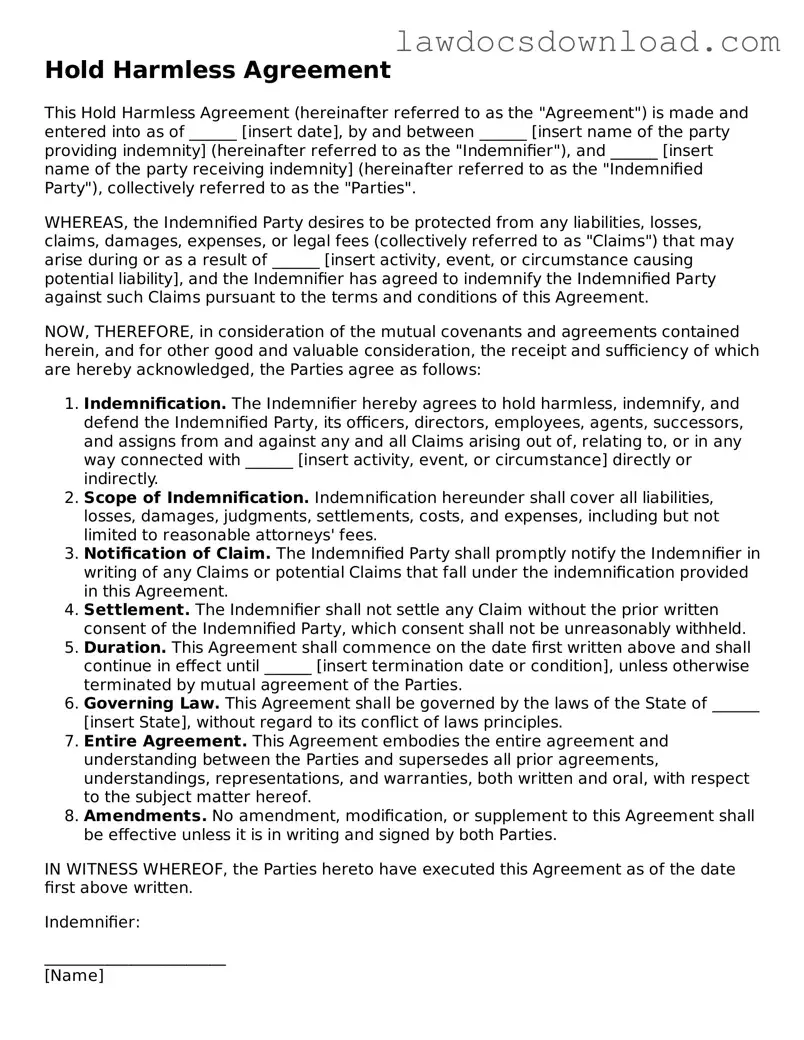A Release of Liability Form is similar to a Hold Harmless Agreement because both documents are designed to protect one party from legal claims or liabilities that may arise from a specific event or activity. Release of Liability often releases one party from legal claims brought by the signer of the document, typically in scenarios like recreational activities or events where there's a potential for injury.
An Indemnity Agreement also shares similarities with a Hold Harmless Agreement as it involves one party agreeing to indemnify or compensate another party for any losses or damages that occur. This can be due to various reasons like breach of contract, negligence, or other liabilities. The key purpose is to shift the financial burden associated with such losses from one party to another.
A Non-Disclosure Agreement (NDA) parallels the Hold Harmless Agreement in its protective aim, albeit in the context of information rather than liability. An NDA is used to safeguard confidential information from being disclosed by one party to unauthorized parties, just as a Hold Harmless protects against claims and liabilities arising from certain actions or events.
Waivers of Liability, much like Hold Harmless Agreements, are used to inform participants of inherent risks involved in an activity and to relinquish the right to sue the provider in the case of injury or damage. These are commonplace in activities deemed as high-risk, including sports and adventure experiences, to protect organizations or individuals hosting such events.
Insurance Policies can be related to Hold Harmless Agreements by their shared objective of managing risk. While an insurance policy transfers risk from the insured to the insurer in exchange for payment (premium), a Hold Harmless Agreement transfers liability risks between two parties involved in a contract or agreement, without the exchange of premiums.
An Arbitration Agreement, while distinct in purpose, aligns with the Hold Harmless Agreement in its preventative nature against litigation. Instead of courts, disputes are resolved through arbitration. This agreement preemptively decides the method of dispute resolution, similarly to how a Hold Harmless aims to prevent disputes by clarifying responsibilities and liabilities.
Service Agreements often incorporate hold harmless clauses, establishing a direct link between the two. In a Service Agreement, one party agrees to perform services for another, and a hold harmless clause within it would limit the service provider's liability, protecting them from lawsuits or claims arising from their work.
A Property Lease Agreement may include terms similar to those in a Hold Harmless Agreement, especially concerning the use of property. Lessees might agree to not hold the landlord responsible for certain damages or injuries that occur on the property, aligning with the concept of holding another party harmless against liabilities.
Finally, a Construction Contract can mirror a Hold Harmless Agreement through clauses that shift liability for accidents or damages occurring on a construction site from the property owner to the contractors or subcontractors. These agreements ensure that contractors are responsible for their work areas, paralleling the liability protections in a Hold Harmless Agreement.
